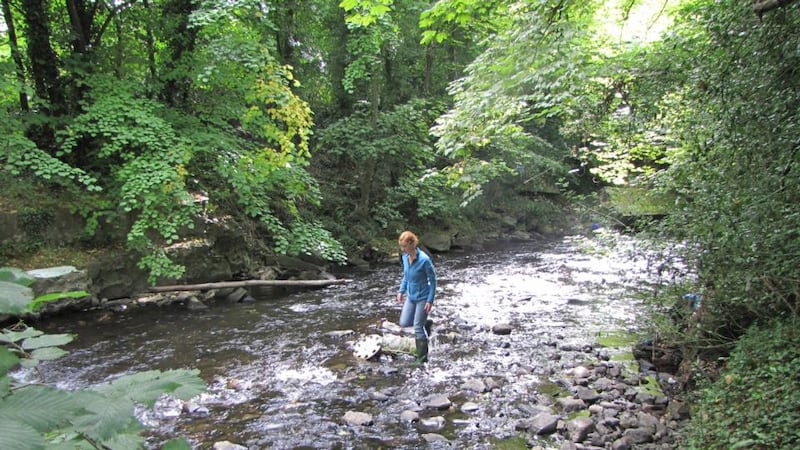'Twilight over meadow and water, the eve-star shining above the hill, and Old Nog the heron crying kra-a-ark! as his slow dark wings carried him down to the estuary."
These are the opening lines of Tarka the Otter, Henry Williamson's heart-achingly evocative account, half novel and half natural history, of the life and death of one our most elusive and attractive animals.
Williamson lived a hermit’s life in Devon, trying to escape the demons he had encountered in the trenches of the first World War.

He rescued an otter pup whose mother had been shot, and he somehow persuaded his cat to wean it. The otter became his inseparable companion, until its foot was caught in a rabbit trap while they were out walking. The creature fled into the undergrowth, minus three toes, and never returned.
Williamson’s long and fruitless search for his beloved pet provided the material that gives his Tarka such remarkable authenticity.
By a curious coincidence, Gavin Maxwell, a special-forces trainer in the second World War, also sought refuge from his memories in a similarly solitary cottage to Williamson’s, this time on the west coast of Scotland. Maxwell found an otter pup he called Mijbil, and he brought it home.
Mijbil became the subject of Ring of Bright Water, another first-class book about an otter's life. Creature and human were so close that when Maxwell's lover, the poet Kathleen Raine, inadvertently caused Mijbil's death, the event precipitated the end of their troubled relationship.
The otter combines this remarkable literary link to remote places with an uncanny capacity to pass unseen through most of our lives, though it may be living right under our noses, or at least under our local bridges.
So it is intriguing to find that one of our largest carnivores now joins the much more visible peregrine falcon, and the fox, as an animal at home, or at least surviving, in our cities. In January, Michael Viney reported here on the identification by scientists at University College Cork, working with Irish Wildlife Trust volunteers, of 11 otters hunting regularly near Cork city centre.
The trust in Dublin has now come up with evidence of significant numbers of otters on the Dodder and the Tolka.
Kate Ruddock, who led the Dublin surveys, says she was surprised by the extent of the otter presence they detected. The 30-odd volunteers were split into groups of three to four, and carried out an intense search of a 300m stretch on either side of a bridge.
There is a pragmatic reason for this site selection: bridges give relatively easy access to the river. But otters also favour their supporting pillars as a place to leave their droppings, known as spraints, to mark out their territory.
According to the volunteers’ briefing document, the spraints “have a sweet or an oily smell”. One of the volunteers, Barbara Freitag, an author and retired lecturer in intercultural studies, confirms this. She says: “It’s a peculiar smell, not vile, almost nice.”
Otter footprints are also fairly distinctive, especially in soft mud or snow, when the webbing between the five toes that helps them to swim so fast may be visible.
Surveyors also watched out for holts, the underground resting places where the female also rears the young. Otters also create resting places above ground, known as couches, which are often simply depressions in vegetation, similar to the form made by a hare. They also make slides, well-worn access points to the water down steep banks.
From all these signs, Ruddock’s volunteers found that otters regularly use both rivers.
There is less evidence on the Dodder, which is more often constrained by artificial channelling.
The Tolka, on the other hand, was found to have otters in outlying reaches around Damastown and Mulhuddart, and along the edge of the National Botanical Gardens, in Glasnevin.
Spraint samples from the survey have been sent for DNA analysis, and by the end of the year this will, with luck, reveal how many individual otters left calling cards.
The presence of top predators such as otters, along with the return of salmon, indicates improving ecological health in both rivers. But much remains to be done, and Ruddock is leading Irish Wildlife Trust clean-ups to remove litter on the rivers, and to map and to remove alien invasive vegetation, in the weeks to come.
Clare Murray, a zoologist who trained volunteers, says, “So many people walk and drive across the Dodder river on a daily basis but are unaware of the wildlife that can be found there. I would hope that our results would encourage members of the public to enjoy and discover the wildlife found in their local areas and to promote and support further surveys.”
Freitag, who had no previous experience of wildlife surveys, says she feels deeply rewarded by this kind of work, especially at one key moment: “My team observed two otters swim across the river just outside the botanic gardens. It is difficult to express our feeling of great pleasure and happiness.”
The Dodder clean-up is on Thursday; a clean-up of the Royal Canal is on October 12th; the Tolka clean-up will be in January; dublinbranch@iwt.ie

















